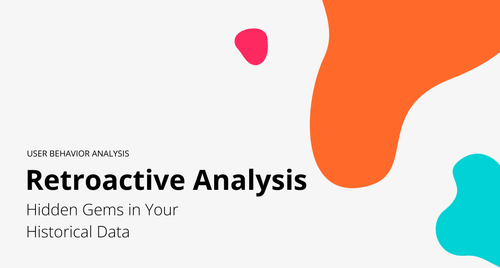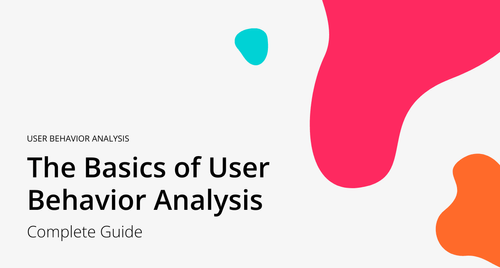User Behavior Analytics
2.04.2024
6 minutes read
Effective Consent Boxes: Google Consent Mode 2.0
As of March 2024, website owners using Google products like Analytics, Ads, and Tag Manager are required to implement Google Consent Mode 2.0 (GCM v2).

List of Contents
Starting from March 2024, website owners using Google products like Analytics, Ads, and Tag Manager are required to implement Google Consent Mode 2.0 (GCM v2). This update ensures users have greater control over their data privacy by giving them a choice about which cookies are used to track their activity on the website. But implementing GCM v2 is just one piece of the puzzle. The design of your consent box plays a critical role in how users perceive your website and whether they choose to share their data. This article will explore the key principles for crafting effective consent boxes that promote informed consent, transparency, and ultimately, higher opt-in rates.
Understanding Cookies
Before diving into the specifics of Google Consent Mode 2.0 (GCM v2), let’s revisit cookies, the data collection mechanism it regulates. Cookies are small text files websites store on user devices (whether it's a computer, phone, or tablet) as they browse the web. These cookies act like tiny digital breadcrumbs, storing information about users' online activity.
There are two main types of cookies relevant to GCM v2:
- First-party cookies: These are cookies your website puts directly on users' devices. They are primarily used to enhance the user experience by remembering user preferences, maintaining login sessions, and storing other site-specific information.
- Third-party cookies: Placed by a domain other than your website. These cookies are often used by advertisers (like Google Ads) to track users' browsing behavior across different websites. This allows them to target users with personalized ads based on their interests.
In essence, cookies help websites remember you and your preferences. An online store might use first-party cookies to remember the items in your shopping cart. An advertiser might use third-party cookies to track the websites you visit and show you ads related to your browsing history.
Understanding cookies is crucial in the context of GCM v2. This update gives users more say in how cookies track their online activity. Imagine users feeling empowered, not confused, when they see your consent box. By clearly explaining cookies and why they're used in your consent box, you can build trust through transparency and ensure users make informed decisions about their data. Think of it as a win-win: users understand what data is being collected and have control, while you get valuable insights to improve your website and marketing strategies.
What is Consent Mode 2.0?
Google Consent Mode v2 introduces an updated mechanism that empowers companies to customize the functionality of Google tags based on user consent to advertising and analytics cookies. But it’s not just about technical adjustments (although that's happening behind the scenes).
The key feature for website owners is a user-friendly consent box. This box appears when users first visit your site and explains what kind of cookies are used. It offers users the flexibility to choose their level of consent: accept all cookies, reject all of them, or select only the ones they're comfortable with.
While website owners may view this as an added hurdle, its significance cannot be underestimated or overlooked. We'll explore the consequences of skipping it later in this article. Google Consent Mode v2 is a response to growing user privacy concerns and stricter regulations. By adapting your website to this new standard, you demonstrate respect for user privacy and ensure compliance with the latest rules. This, in turn, helps you maintain a positive user experience and continue to leverage user data for your marketing activities.
What happens if I don’t implement Consent Mode 2.0?
Failing to implement Consent Mode v2 can have serious consequences, including:
- Limited Data: Without a proper consent mechanism, you might collect less user data or data of lower quality.
- Reduced Targeting: Lack of this data will hinder your ability to understand your audience, personalize the user experience, and optimize your marketing efforts.
- Limited Access to Features: Some features and functionalities within Google products like Analytics or Ads might rely on specific types of cookies that require user consent through GCM v2. Without implementing it, you might be missing out on valuable data and insights.
- Non-Compliance with Regulations: Data privacy regulations are constantly evolving, and GCM v2 reflects Google's efforts to comply with stricter user consent requirements. Failing to implement it could put you at risk of violating these regulations, potentially leading to fines or other penalties.
Best practices for obtaining marketing consent
Content
Transparency is the key
DO:
✅ Use clear and concise language that users can easily understand. Avoid technical jargon and legalese.
✅ Briefly explain the different types of cookies used on your website (e.g., first-party for preferences, third-party for advertising).
✅ Highlight user benefits. Explain how the data collected will be used to improve the user experience (e.g. suggesting relevant content, remembering preferences).
DON'T:
❌ Confuse users with technical terms or legalese. Keep it simple and focus on clear communication.
❌ Leave users in the dark about cookie types. Transparency fosters trust.
❌ Focus solely on data collection without explaining the value proposition for users. Explain how consenting benefits them.
Consent Box Design
Design an effective consent box that emphasizes user choice while still achieving your data collection goals
DO:
✅ Focus on Positive Options: Instead of prominently featuring a "reject all" button, prioritize options that encourage users to choose the level of consent they're comfortable with. Here's an example structure:
- "Accept All Cookies" - This clearly communicates the benefits of full consent (e.g., personalized experience, relevant content).
- "Manage Preferences" - This empowers users to select specific cookie types they'd like to allow (e.g., functional cookies for website performance, analytics cookies to improve the site).
✅ Visual Hierarchy: Design your consent box with a clear visual hierarchy. Use contrasting colors, bold fonts, and appropriate spacing to draw user attention to the "Accept All" and "Manage Preferences" options. "Manage Preferences" can be slightly less prominent, but still easily accessible.
✅ Link to a Detailed Privacy Policy: Provide a clear link to your website's privacy policy for users who want to learn more about data collection practices.
DON'T:
❌ Limit user choice by only offering "accept all" or "reject all" options. Granular control empowers users.
❌ Hide the consent box or make it difficult to find. Users should be able to easily see and interact with it.
❌ Use Dark Patterns. Don't resort to manipulative tactics like pre-checked boxes or making the "Manage Preferences" option difficult to find. This can erode user trust and potentially lead to lower opt-in rates.
By following these design principles, you can create a consent box that is informative, transparent, and empowers users to choose their level of data sharing. This builds trust and fosters a sense of control for your website visitors. With the Google Consent Mode 2.0 (GCM v2), obtaining informed consent is no longer optional – it's essential. Without user permission for marketing and analytics cookies, you'll lose the ability to personalize the user experience, target your marketing efforts effectively, and gain valuable insights to improve your website. A well-designed, effective consent box becomes the bridge between respecting user privacy and achieving your marketing goals. By prioritizing transparency and user choice, you can encourage informed consent and ensure continued success in the age of data privacy regulations.

26/02/2025
6 minutes read
Retroactive Analysis: Hidden Gems in Your Historical Data
Understanding where you've been is often the key to navigating where you're going. — Cheesy as it may sound, it's relatable not just in life but also in digital experience analytics.
Read more
26/02/2025
6 minutes read
The Basics of User Behavior Analysis - CUX Complete Guide
In the ever-evolving landscape of digital experiences, understanding user behavior has become a cornerstone for businesses striving to stay ahead.
Read more
22/09/2023
6 minutes read
From metrics to motivations: How to combine quantitative and qualitative data
The trend of user-centricity has reached unprecedented heights in the product analytics market. It’s no longer enough to know which product sells better or which article gets lots of views. Success comes from seeing things through your customers' eyes.
Read more
